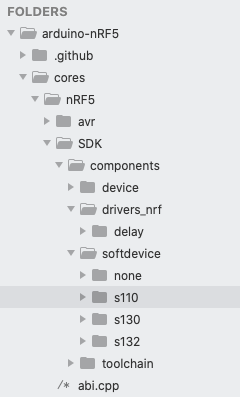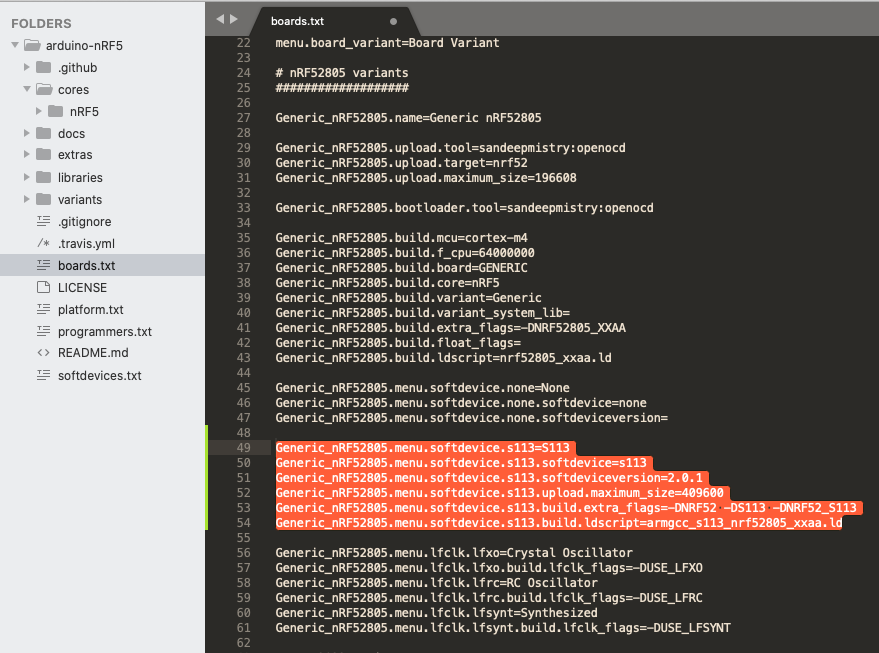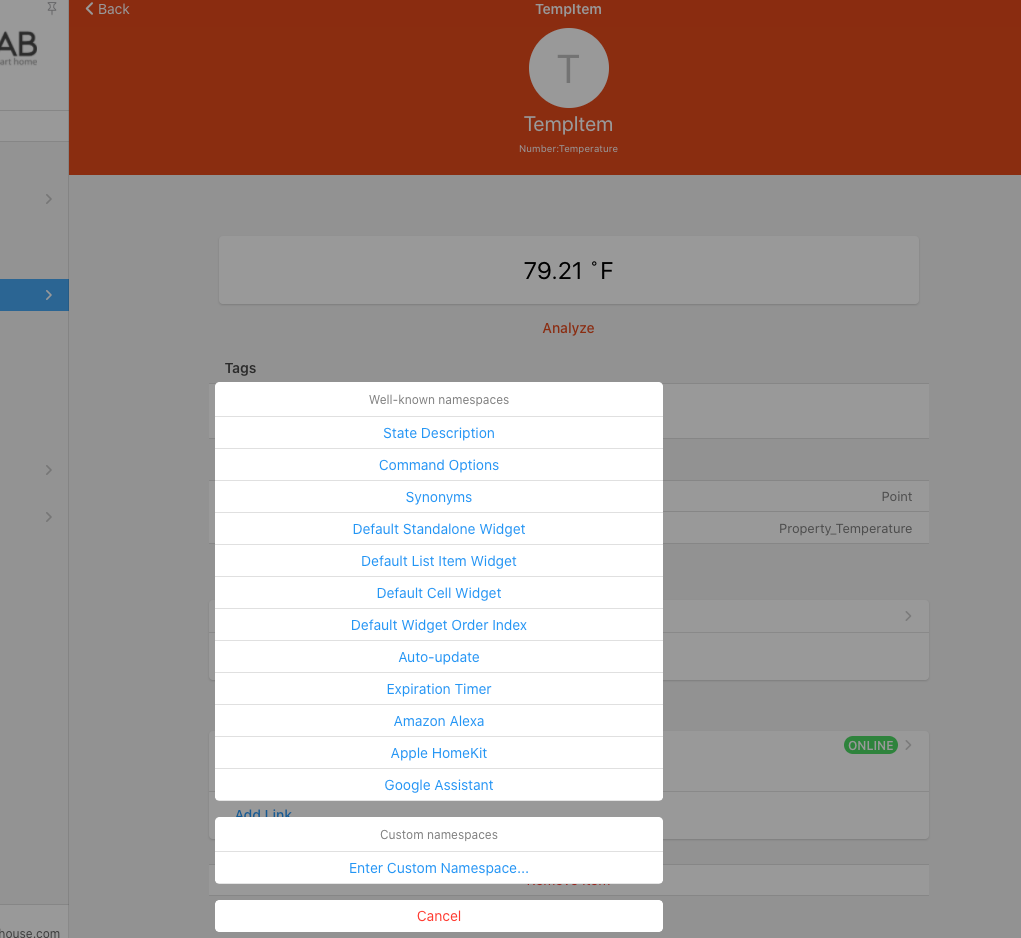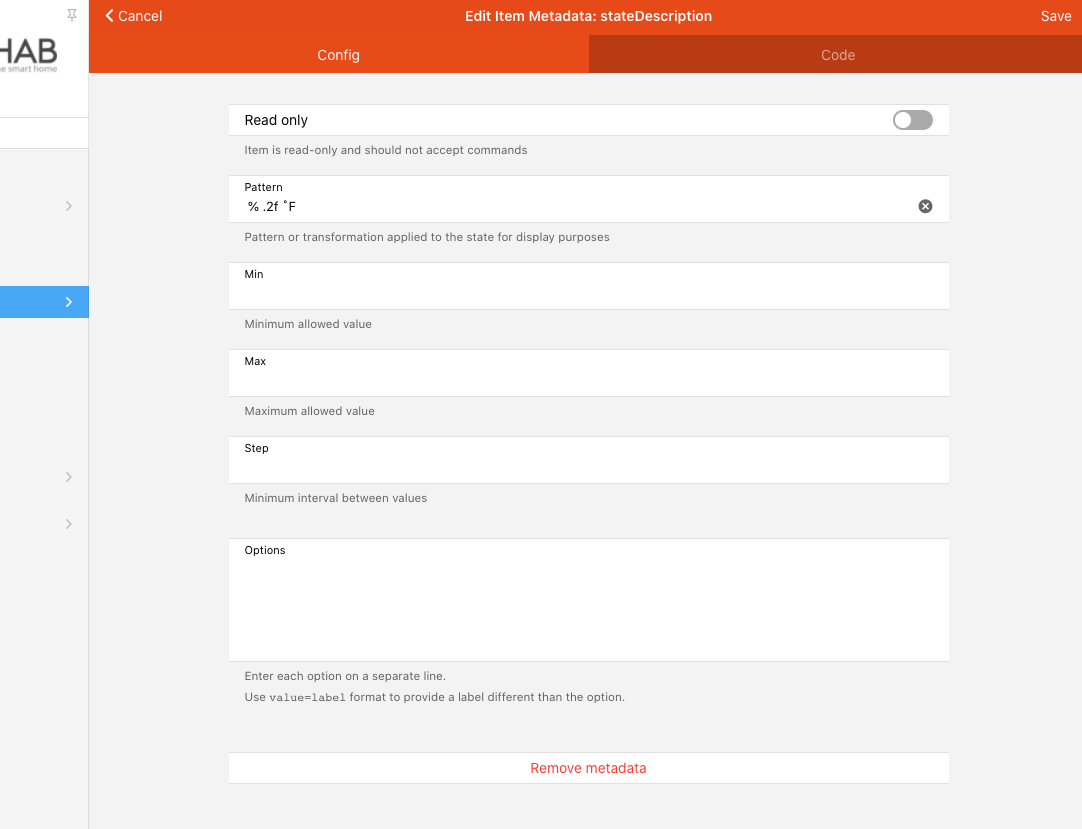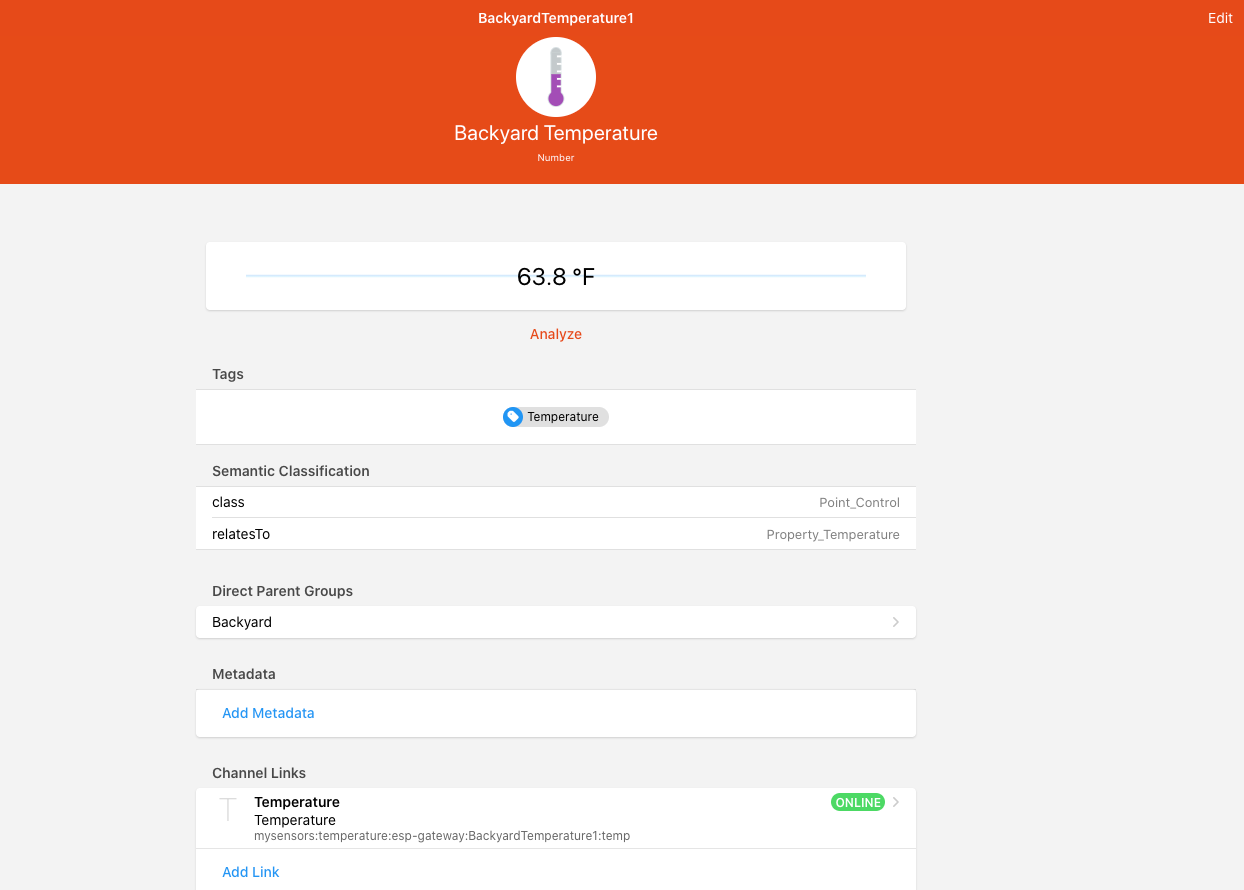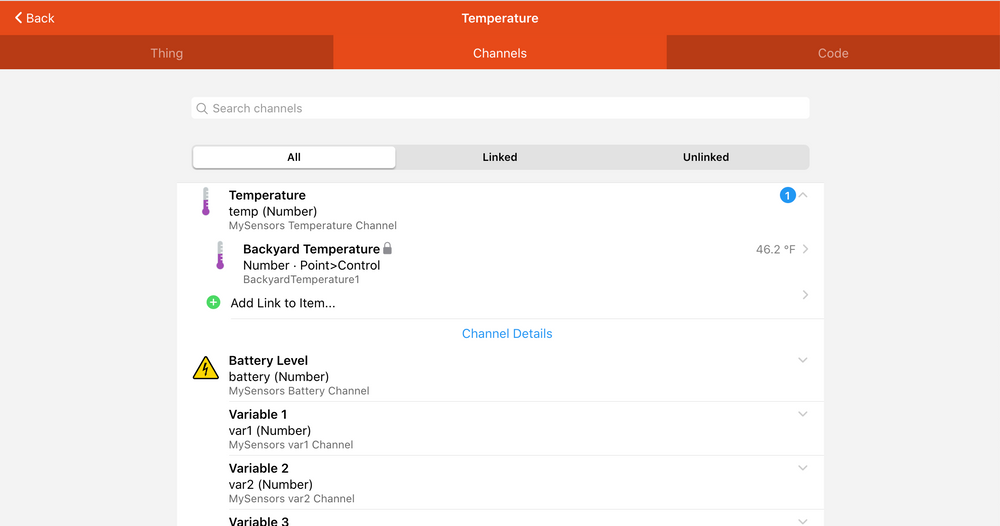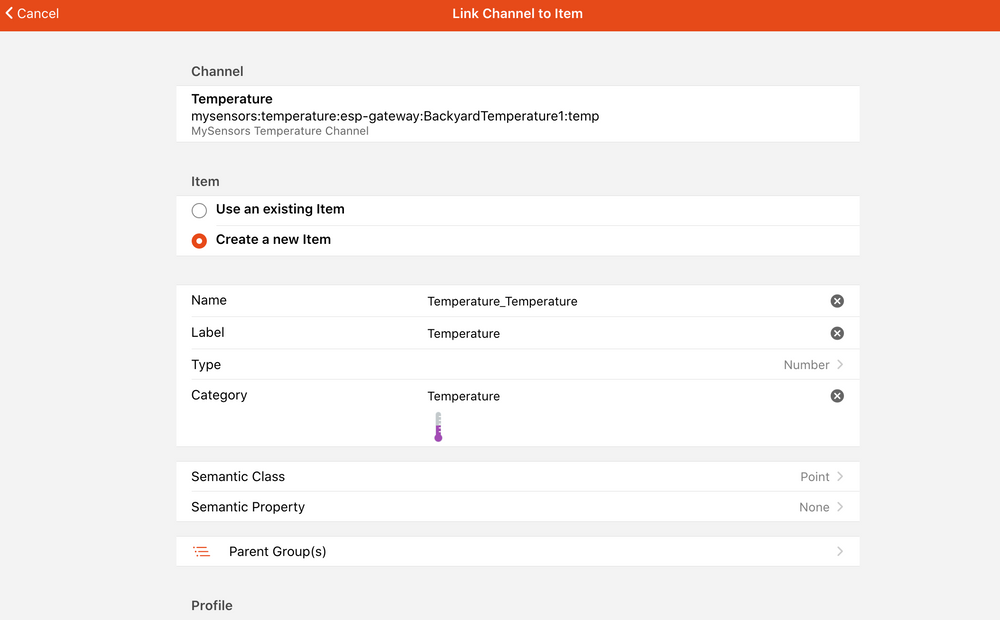@haloway13 Here are all of my settings in my sandbox environment.
A couple things to note, NO MQTT BINDING INSTALLED, no special MQTT thing configured, my mqtt install is not password protected.
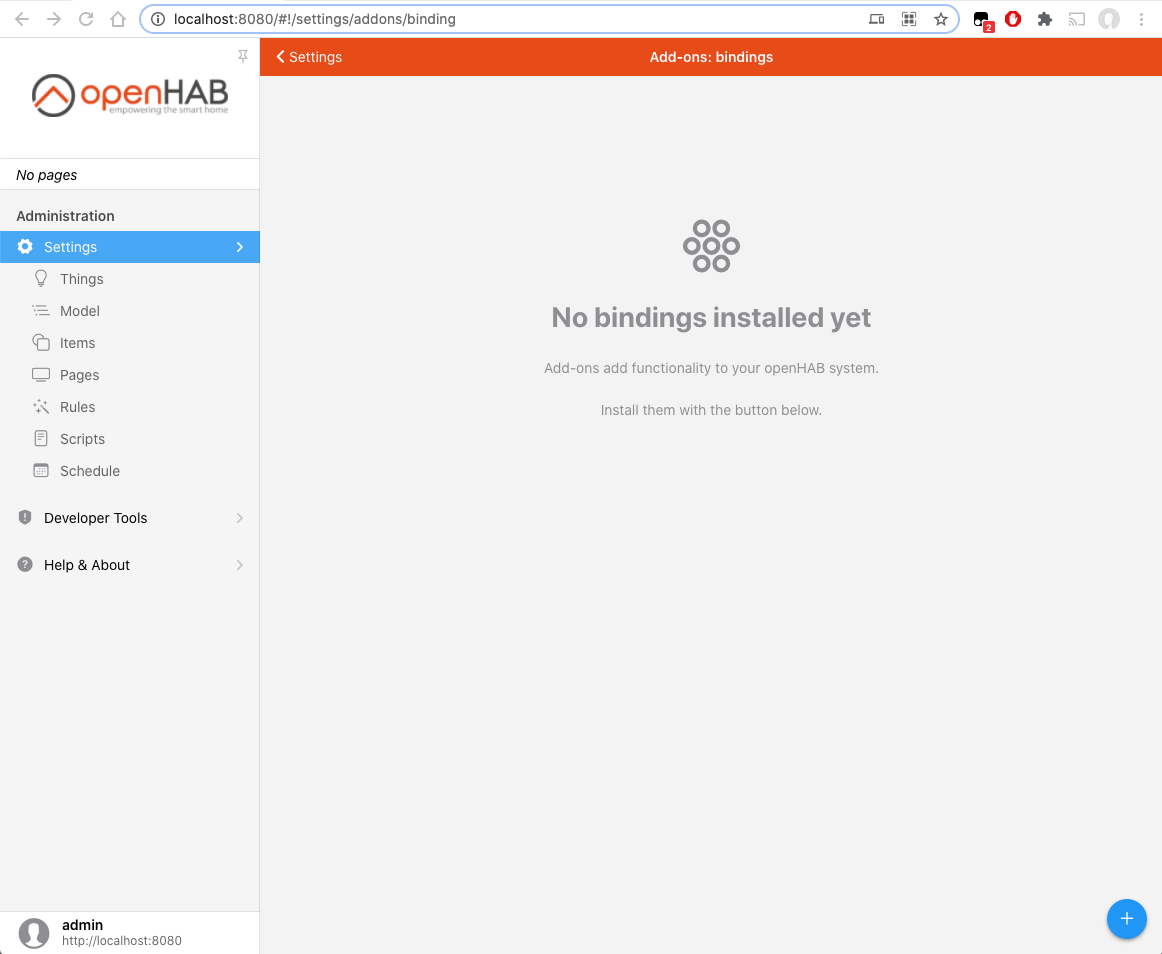
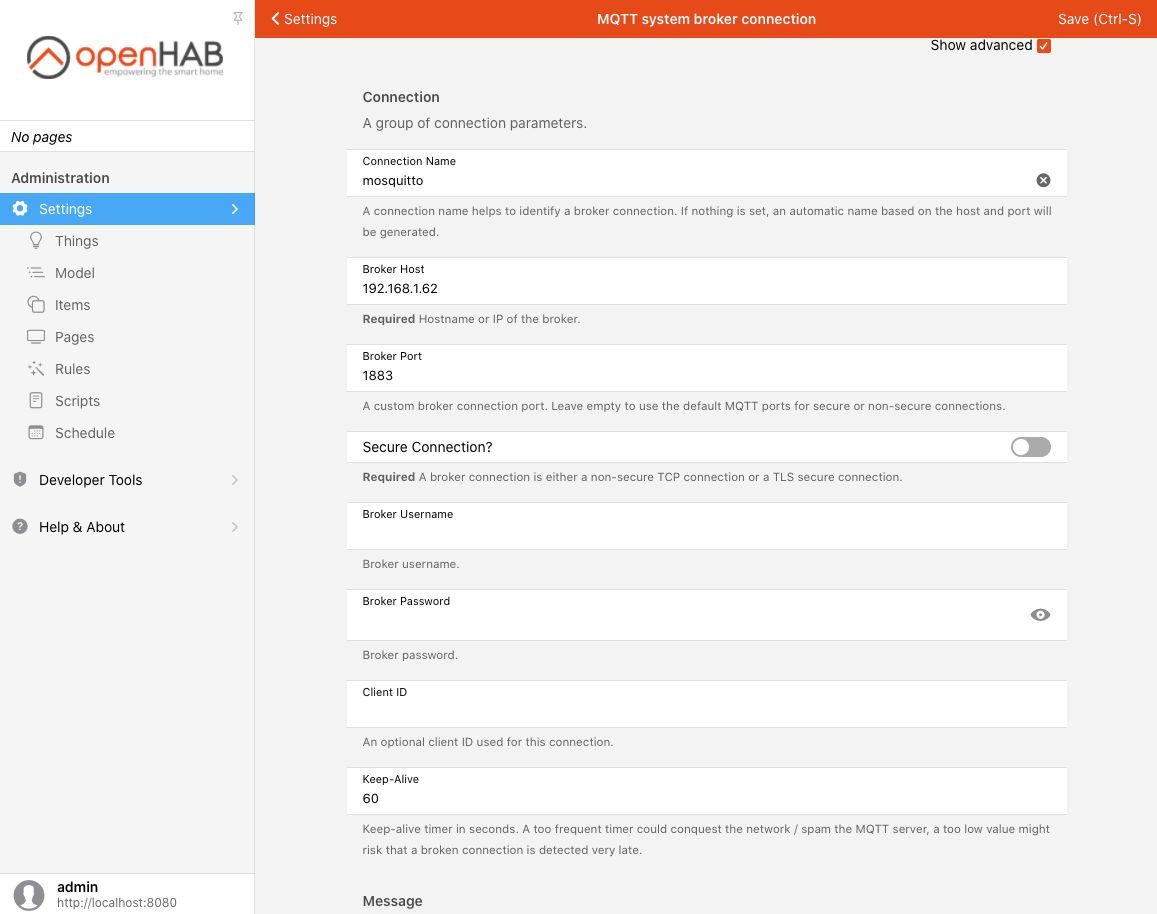
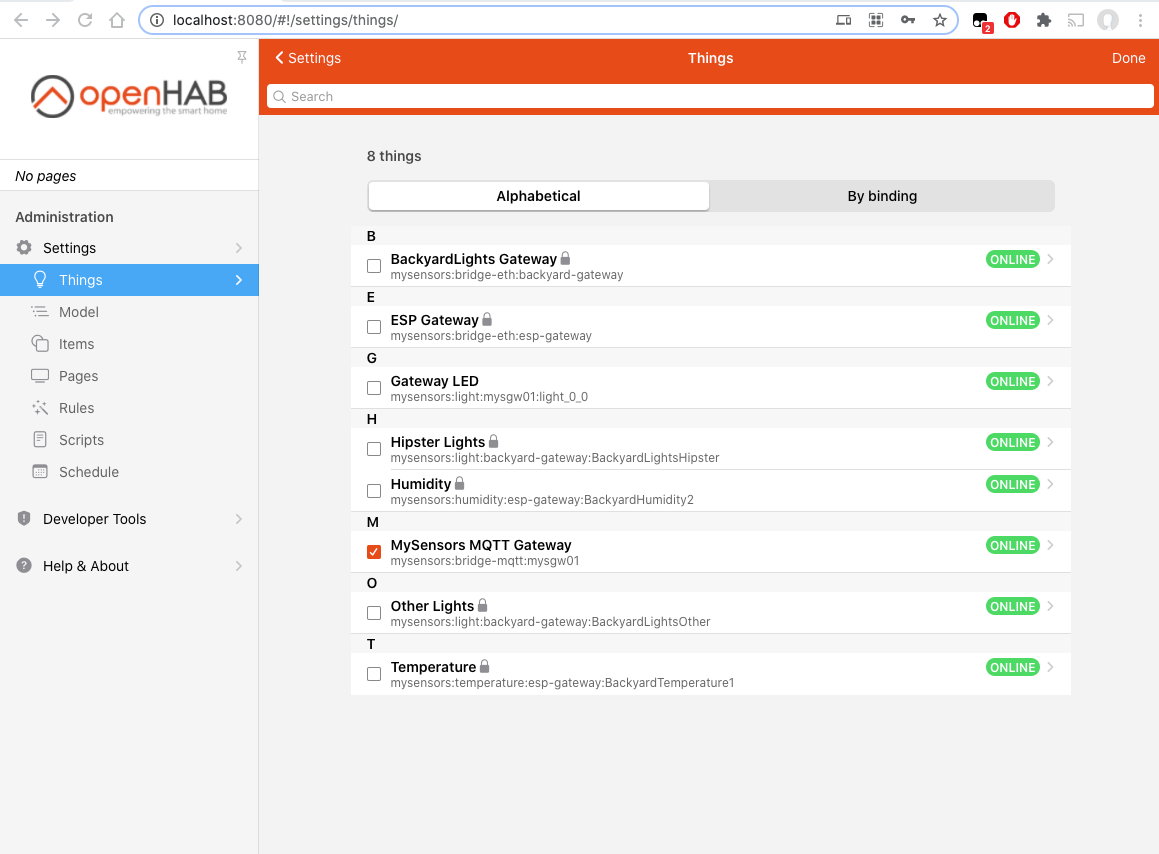
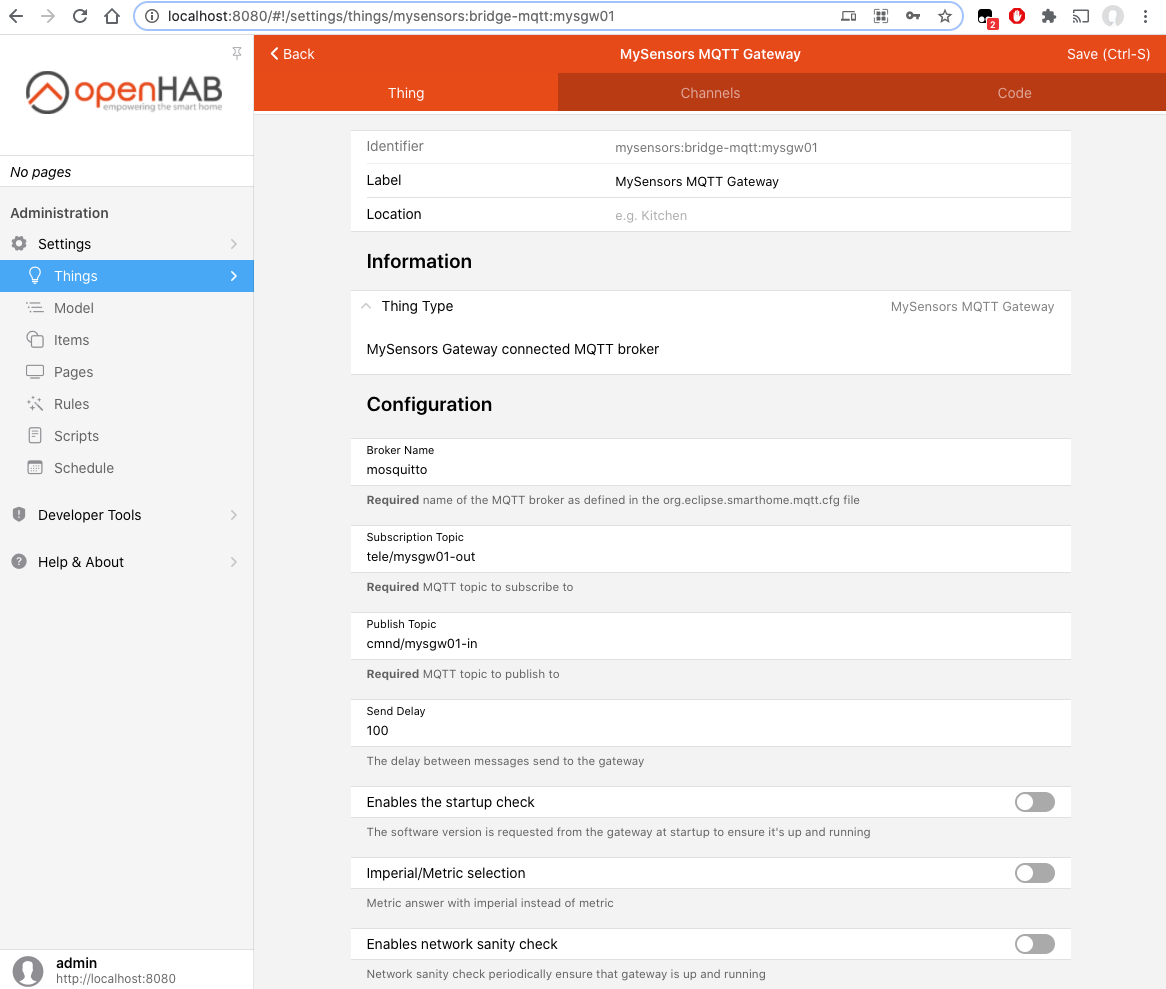
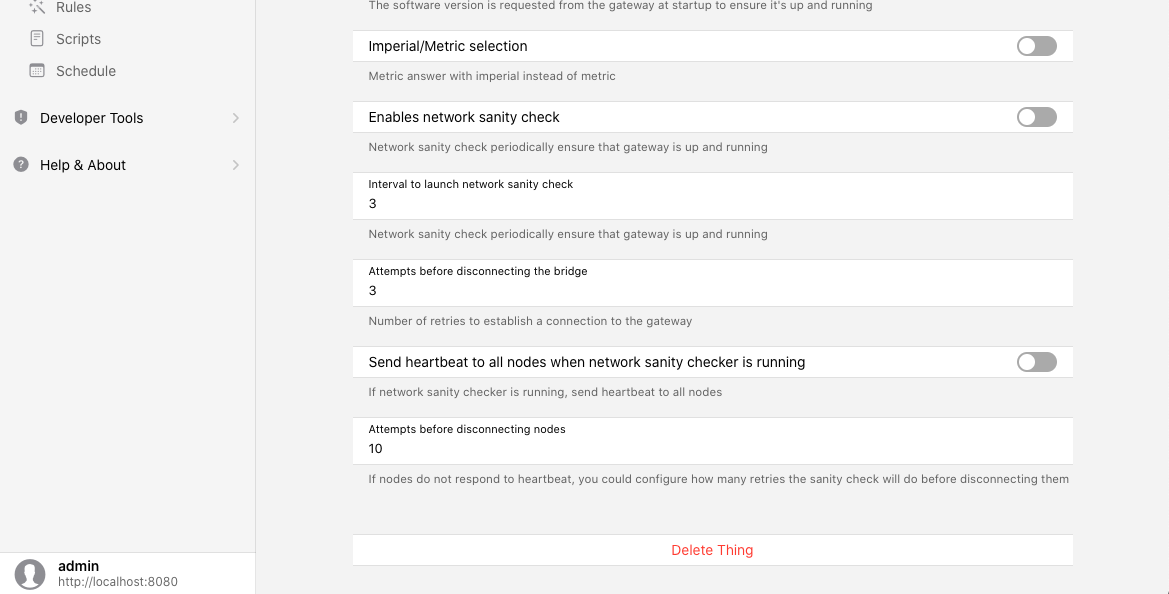
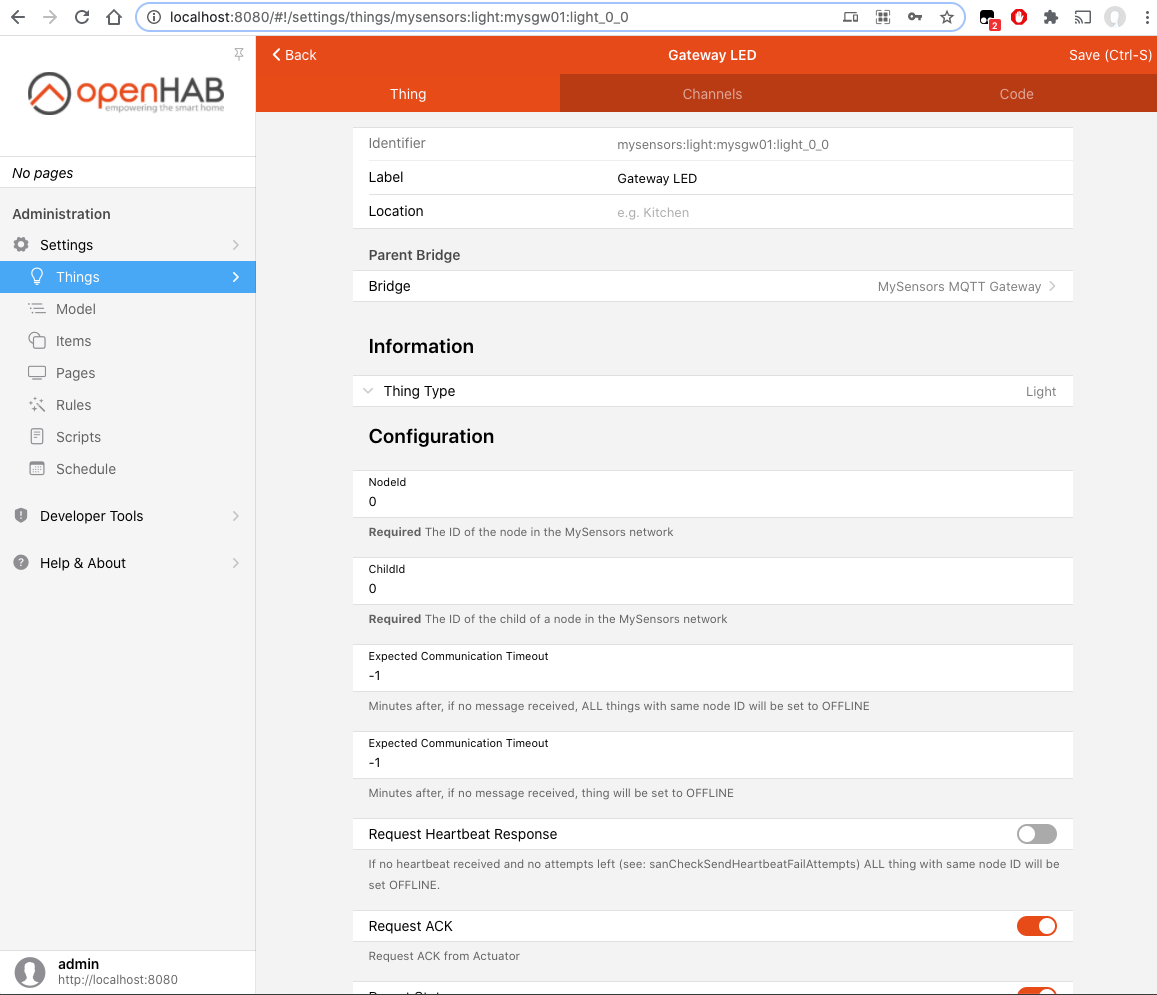
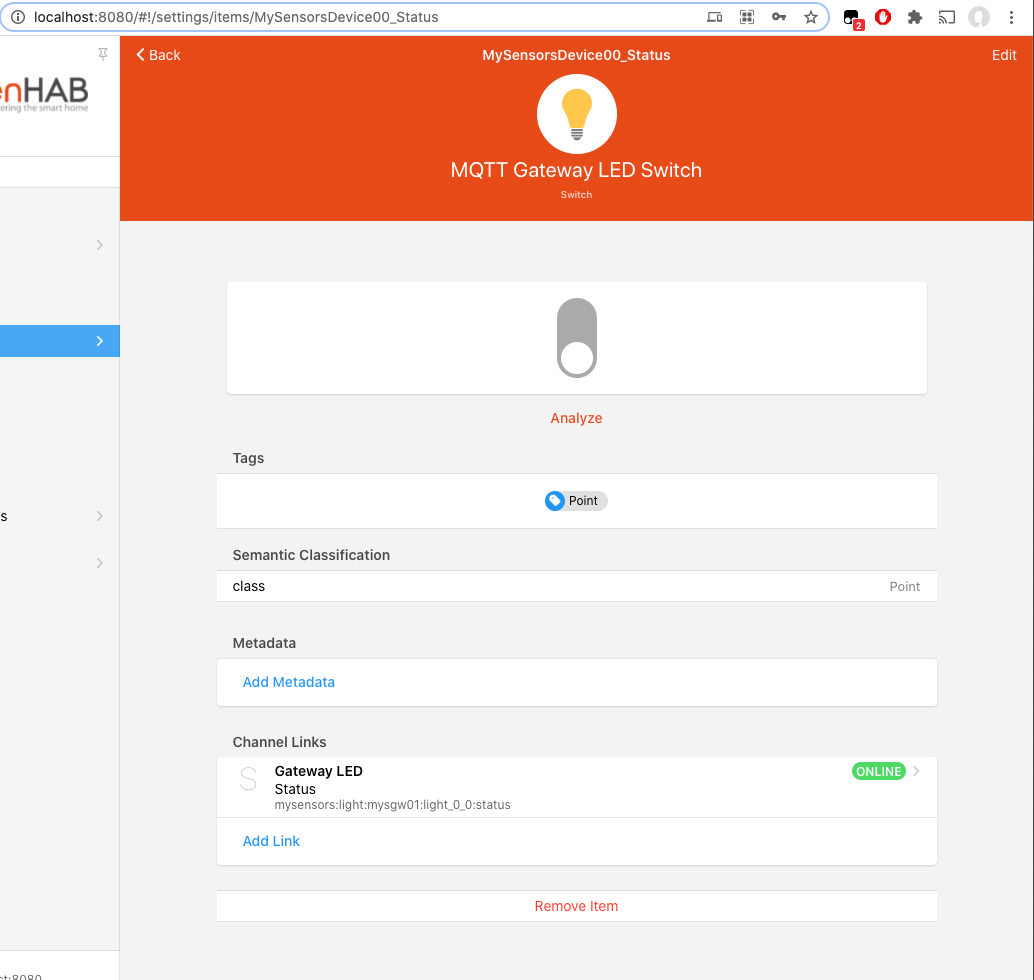
My Gateway code:
// Enable debug prints to serial monitor
#define MY_DEBUG
// Enables and select radio type (if attached)
//#define MY_RADIO_RF24
//#define MY_RADIO_RFM69
//#define MY_RADIO_RFM95
#define MY_GATEWAY_MQTT_CLIENT
#define MY_GATEWAY_ESP8266
#define MY_BAUD_RATE 9600
#define MY_MQTT_CLIENT_ID "MYSGW01"
// Set this node's subscribe and publish topic prefix
#define MY_MQTT_PUBLISH_TOPIC_PREFIX "tele/mysgw01-out"
#define MY_MQTT_SUBSCRIBE_TOPIC_PREFIX "cmnd/mysgw01-in"
// Set MQTT client id
// Enable these if your MQTT broker requires username/password
//#define MY_MQTT_USER "username"
//#define MY_MQTT_PASSWORD "password"
// Set WIFI SSID and password
#define MY_WIFI_SSID "--------"
#define MY_WIFI_PASSWORD "*********"
// Set the hostname for the WiFi Client. This is the hostname
// passed to the DHCP server if not static.
#define MY_HOSTNAME MY_MQTT_CLIENT_ID
// Enable MY_IP_ADDRESS here if you want a static ip address (no DHCP)
//#define MY_IP_ADDRESS 192,168,178,87
// If using static ip you can define Gateway and Subnet address as well
//#define MY_IP_GATEWAY_ADDRESS 192,168,178,1
//#define MY_IP_SUBNET_ADDRESS 255,255,255,0
// MQTT broker ip address.
#define MY_CONTROLLER_IP_ADDRESS 192, 168, 1, 62
//MQTT broker if using URL instead of ip address.
// #define MY_CONTROLLER_URL_ADDRESS "test.mosquitto.org"
// The MQTT broker port to to open
#define MY_PORT 1883
// Enable inclusion mode
//#define MY_INCLUSION_MODE_FEATURE
// Enable Inclusion mode button on gateway
//#define MY_INCLUSION_BUTTON_FEATURE
// Set inclusion mode duration (in seconds)
//#define MY_INCLUSION_MODE_DURATION 60
// Digital pin used for inclusion mode button
//#define MY_INCLUSION_MODE_BUTTON_PIN D1
// Set blinking period
//#define MY_DEFAULT_LED_BLINK_PERIOD 300
// Flash leds on rx/tx/err
//#define MY_DEFAULT_ERR_LED_PIN 16 // Error led pin
//#define MY_DEFAULT_RX_LED_PIN 16 // Receive led pin
//#define MY_DEFAULT_TX_LED_PIN 2 // the PCB, on board LED
#include <ArduinoOTA.h>
#include <MySensors.h>
void setup()
{
pinMode(LED_BUILTIN, OUTPUT);
// Setup locally attached sensors
ArduinoOTA.setHostname(MY_HOSTNAME);
ArduinoOTA.onStart([]() {
Serial.println("ArduinoOTA start");
});
ArduinoOTA.onEnd([]() {
Serial.println("\nArduinoOTA end");
});
ArduinoOTA.onProgress([](unsigned int progress, unsigned int total) {
Serial.printf("OTA Progress: %u%%\r", (progress / (total / 100)));
});
ArduinoOTA.onError([](ota_error_t error) {
Serial.printf("Error[%u]: ", error);
if (error == OTA_AUTH_ERROR) {
Serial.println("Auth Failed");
} else if (error == OTA_BEGIN_ERROR) {
Serial.println("Begin Failed");
} else if (error == OTA_CONNECT_ERROR) {
Serial.println("Connect Failed");
} else if (error == OTA_RECEIVE_ERROR) {
Serial.println("Receive Failed");
} else if (error == OTA_END_ERROR) {
Serial.println("End Failed");
}
});
ArduinoOTA.begin();
}
void presentation()
{
// Present locally attached sensors here
sendSketchInfo("MYSGW01-TEST Gateway","1.0");
present(0, S_BINARY);
}
void loop()
{
// Send locally attached sensors data here
ArduinoOTA.handle();
}
void receive(const MyMessage &message)
{
// We only expect one type of message from controller. But we better check anyway.
if (message.type==V_STATUS) {
// Change relay state
digitalWrite(LED_BUILTIN, message.getBool() ? LOW:HIGH);
// Store state in eeprom
saveState(message.sensor, message.getBool());
// Write some debug info
Serial.print("Incoming change for sensor:");
Serial.print(message.sensor);
Serial.print(", New status: ");
Serial.println(message.getBool());
}
}

